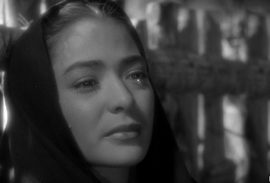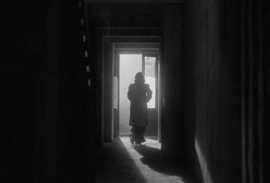DOKU.ARTS
Zeughauskino Berlin
10.09.–12.10.2014

Miradas Múltiples – La Máquina Loca
The renowned Mexican cinematographer Gabriel Figueroa (1907-1997) made 200 films in career that began in the mid-1930s with an apprenticeship in Hollywood to Orson Welles' cameraman Gregg Toland, and lasted until the mid-1980s. To international audiences he is perhaps best known for his six-film collaboration with Luis Buñuel that gave rise to such masterpieces as Los Olvidados (1950), Nazarin (1959) and El Angel Exterminador (1961). Late in his career he worked on some notable colour films (for example, John Huston’s Under the Volcano in 1984) but his true predilection was for the black and white palette and for its extraordinary dramatic potential.
It is this aspect of his mastery that Emilio Maillé has chosen to examine in a new and ambitious documentary that mixes extensive extracts from his work with thoughtful and fascinating commentary by some of the world’s leading cinematographers. (For the occasion – and in order to give the film aesthetic harmony – they are themselves photographed in a crisp black and white). The range and quality of these voices is impressive. Chris Doyle, Anthony Dod Mantle, Janusz Kaminski, Vittorio Storaro, Giuseppe Rotunno, Philippe Rousselet, Raoul Coutard, Haskell Wexler, Darius Khondji – they are all there, and many others. From their somewhat different angles, all of them are interested in attempting to define what it is that made black and white cinematography so beautiful in its heyday – and, by extension, what we have lost by not using it widely any longer. Yet the documentary is also a film about Mexico. The deep, cloud-filled skyscapes that Figueroa photographed so lovingly, towering over handsome horsemen and bold, magnificent women in dramatic configurations furnishes – across a whole range of films – a lasting iconography that captures aspects of the national identity we recognise as perennial and tragic.

Emilio Maillé
Emilio Maillé was born in 1963 in Mexico City. He lived from 1980 until 2005 in Paris, and graduated in French philology and film studies from the Université de Paris 3 – Sorbonne Nouvelle. His first film Rosario Tijeras (2005) was a huge cinematic success in Colombia, where it was filmed and produced, and was shown in numerous countries. Maillé has shot diverse documentary films for French, Spanish, and Mexican television channels; he is currently a member of the Sistema Nacional de Creadores de Arte (FONCA).
